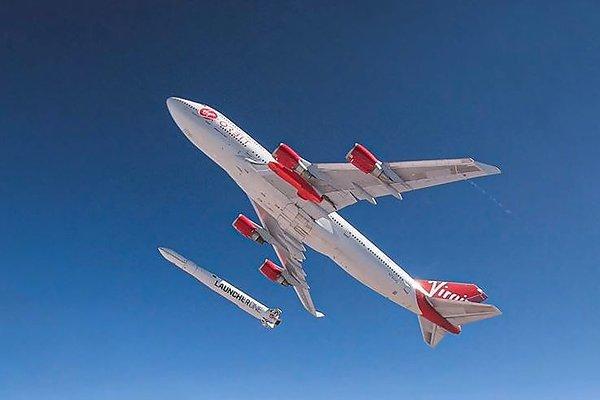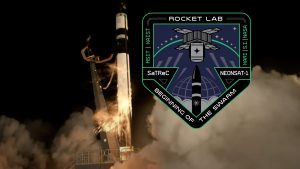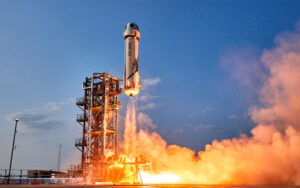Opening space for good: Virgin Orbit launch history and update
18th Apr 2022
Virgin Orbit is one of two aerospace companies in the Virgin Group conglomerate owned by British businessman and billionaire, Richard Branson, and boasting an already impressive launch history. Unlike its older counterpart Virgin Galactic, which focuses on tourist suborbital flights, Virgin Orbit provides payload launch services into LEO using the Cosmic Girl- Launcher One air launch system.
Initially, one of the Virgin Galactic divisions developed the technology of satellite launch, but in 2017, Virgin Galactic satellite launch activity was reassigned to a separate company. Virgin Orbit is led by former Boeing Vice President Dan Hart and has over 200 employees.
Virgin Orbit launch: features and benefits
Branson’s rocket launch concept is far from new. The American state-owned company Orbital has been implementing a similar Starliner-Pegasus XL program since 1997. However, their brainchild launch is much more expensive (150 million versus 12 million), and the carrying capacity of the Pegasus rocket is lower, so it takes off less and less, simply unable to withstand Virgin Orbit’s competition. In other words, Virgin Orbit is currently the only company in its niche serving both public and private customers.
What is so special about the Virgin Orbit launch? If the classic launch vehicle takes off vertically with the help of boosters and the first stage, helping it overcome the force of the Earth’s gravity and the dense layers of the atmosphere, with Virgin Orbit, this task is performed by a cargo modified Boeing 747-400 aircraft, named by Branson in honour of one of the songs of his favourite band Jamiroquai Cosmic Girl. The aircraft, to which the Launcher One booster is attached, takes off horizontally and rises to an altitude of 30,000+ feet. Then the rocket undocks, turns on its own engines and rushes into space.
So, Virgin Orbit air orbital launch has several advantages vs vertical launch.
- Flexible launch conditions. A specially equipped launchpad is not necessary (the airport infrastructure and the runway for large-sized aeroplanes are enough for any Virgin Orbit launch date),
- The ability to start from the desired latitude. If the Virgin Orbit aircraft has a significant range, you can start from a lower latitude to increase the payload or move to the correct latitude to create the desired orbit inclination.
- Affordability. Starting in a rarefied atmosphere reduces back pressure losses and increases the specific impulse of the Virgin Orbit rocket engine since the oxidiser is taken “free” from the air and does not need to be carried aboard. And this means that the Virgin Orbit rocket will be much more efficient with smaller dimensions and, as a result, more economical in terms of production and fuel costs.
It took Virgin Orbit just three years to get ready for its first launch to orbit, but let’s not forget that Virgin Galactic’s 15 years of experience preceded such rapid progress.
Virgin Orbit’s first launch date
The first LauncherOne flight took place on 25th May 2020. The separation of the Virgin Orbit rocket from the aircraft proceeded normally, but a few seconds after the Newton Three first-stage engines were turned on, one of them stopped working due to a fuel line failure, and the rocket failed to gain altitude. The problem was fixed by reinforcing the broken components, and the Virgin Orbit next launch was a success.
On 17th January 2021, Cosmic Girl launched from the Mojave Spaceport in California and delivered LauncherOne to an altitude of 35,100 feet, from where it launched to LEO and deployed 10 CubeSats for NASA’s Elana 20 educational mission. NewtonThree and NewtonFour first- and second-stage engines worked without error. Virgin Orbit has had three successful launches to date and is planning five more in 2022.
All launches take place from the Mojave spaceport, but the company is going to expand its geography and has already signed agreements with the Kennedy Space Center in Florida and Cornwall Spaceport in the UK.
Launcher One lifts up to 500kg to LEO and up to 300kg to SSO, and its launch cost is about $12 million. Virgin Orbit also says that LauncherOne will be able to deliver payloads to a heliocentric orbit to fly around Mars, Venus or asteroids.
Below we present to your attention Virgin Orbit launch schedule, which will be updated. Bookmark this page to know all Virgin Orbit launch updates on Orbital Today.
Virgin Orbit launch schedule (updated)
|
Flight № |
Date and time (UTC) |
Launch site |
Payload |
Orbit |
Customer |
Outcome |
|
1 |
25 May 2020 19:50 |
Mojave Air and Space Port |
Launch Demo with “inert test payload” (Starshine 4) and INTERNSAT (intended to remain attached to the upper stage). |
LEO |
Virgin Orbit |
Failure |
|
Flight test, maiden orbital flight. Launch failure after successful release and ignition of the NewtonThree engines on the first stage. A high-pressure propellant line broke causing liquid oxygen to stop flowing into the engine. Issue was addressed through strengthening engine components that broke. Prior to failure aerodynamics including fins acted as expected. |
||||||
|
2 |
17 January 2021 19:38 |
Mojave Air and Space Port |
ELaNa 20 payloads: CACTUS-1, CAPE-3, EXOCUBE-2, MiTEE, PICS 1, PICS 2, PolarCube, Q-PACE, RadFXSat-2, TechEdSat-7. |
LEO |
NASA |
Success |
|
Dedicated launch of 10 NASA sponsored CubeSats. First successful launch of LauncherOne and the first fully liquid-fueled air-launched rocket to reach orbit. |
||||||
|
3 |
30 June 2021 14:47 |
Mojave Air and Space Port |
STP-27VPA, BRIK-II, STORK-4, STORK-5 (MARTA) |
LEO |
MDA, USA SMDC, U.S. Navy, RNLAF, SatRevolution |
Success |
|
Tubular Bells, Part One mission. STP-27VPA is composed of four military CubeSats: Gunsmoke-J 3, HALO-Net Free Flyer, and two CNCE Blk 1 satellites. |
||||||
|
4 |
13 January 2022 22:51 |
Mojave Air and Space Port |
STP-27VPB (PAN-A and B, GEARRS-3, TechEdSat-13), SteamSat-2, STORK-3, ADLER-1 |
LEO |
Department of Defense, NASA, SteamJet Space Systems, SatRevolution, Austrian Space Forum |
Success |
|
Above the Clouds mission. STP-27VPB mission for the Defense Innovation Unit is composed of four CubeSats: PAN-A/B (ELaNa 29 mission), GEARRS-3, and TechEdSat-13. |
||||||
Future launches
|
Flight № |
Date and time (UTC) |
Launch site |
Payload |
Orbit |
Customer |
|
|
5 |
30 June 2022 |
Mojave Air and Space Port |
QUEYSSAT CTIM-FD, GPX-2 |
LEO |
U.S. Space Force, DND, CU Boulder, Langley Research Center |
|
|
Straight Up mission. STP-S28A mission for the U.S. Space Force, consisting of 7 satellites. The ELaNa 39 mission, consisting of two CubeSats, will launch on this flight. |
||||||
|
6 |
Sept 2022 |
Cornwall |
Amber-1, ForgeStar-0, Kernow Sat 1, Prometheus 2A & 2B, First Omani satellite |
LEO |
Satellite Applications Catapult, Space Forge, University of Exeter, UK Ministry of Defence, NRO, ETCO |
|
|
First LauncherOne flight from Spaceport Cornwall. |
||||||
| 7 |
Q2 2022 |
Mojave Air and Space Port |
CIRBE, Slingshot-1 |
LEO |
U.S. Air Force, CU Boulder, The Aerospace Corporation |
|
|
STP-S28B mission. The ELaNa-46 mission, consisting of three CubeSats, will launch on this flight. |
||||||
| 8 |
Q3 2022 |
Mojave Air and Space Port |
SatRevolution Mars mission |
Areocentric |
SatRevolution |
|
|
First commercial smallsat mission to Mars, using the Exploration 3-Stage Variant of LauncherOne. |
||||||
| 9 |
Dec 2022 |
Mojave Air and Space Port |
|
LEO |
U.S. Air Force |
|
|
STP-S28C mission. |
||||||
| 10 |
Q1 2023 |
Mojave Air and Space Port |
HYPERSAT 1 |
LEO |
HyperSat |
|
|
First of six launches contracted to Virgin Orbit for HyperSat’s hyperspectral satellite constellation. |
||||||
| 11 |
Q1 2023 |
Mojave Air and Space Port |
QPS-SAR-5 |
LEO |
iQPS |
|
|
|
||||||
| 12 |
2023 |
Mojave Air and Space Port |
QKDSat x 1 |
LEO |
Arqit |
|
|
First of two launches contracted to Virgin Orbit for Arqit’s QKDSat project. |
||||||
| 13 |
TBD |
Mojave Air and Space Port |
QKDSat x 1 |
LEO |
Arqit |
|
|
Second of two launches contracted to Virgin Orbit for Arqit’s QKDSat project. |
||||||






Thank you for your comment! It will be visible on the site after moderation.